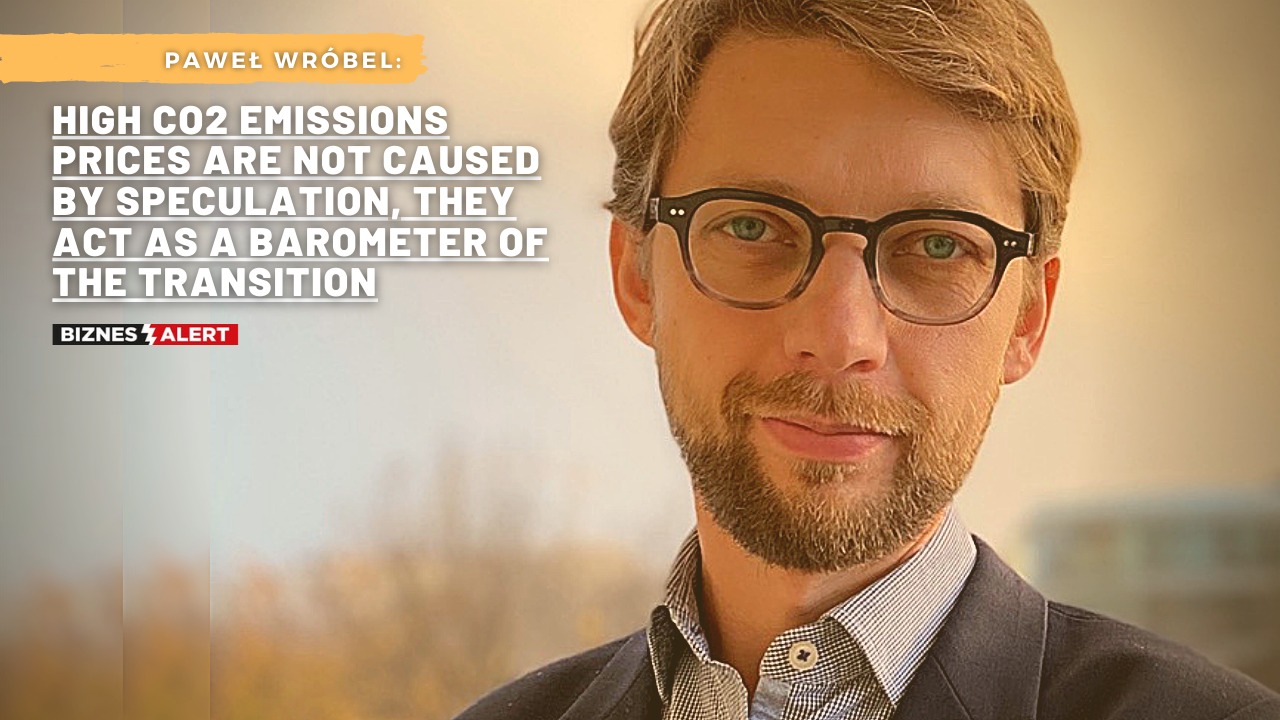According to Paweł Wróbel, head of Gate Brussels, the emission trading system „has become a kind of a barometer that indicates what we may expect from EU legislation with regard to emissions reduction”. „The prices are going up not because of speculation, but because they reveal in what direction the EU legislation on climate neutrality is going,” he said in an interview with BiznesAlert.pl.
BiznesAlert.pl: What do you think about the European Emissions Trading System (EU ETS) after two decades of its existence?
Paweł Wróbel: Indeed this is the right time to take a closer look at this mechanism. Enough time has passed to examine how the system has evolved, how it has been changing, and to assess it from a historical perspective. After such a long time, the system has now matured. Considering the ongoing decarbonization in Europe, it can be said that this tool has achieved its basic goal. Importantly, this mechanism reflects not just the trends that are visible here and now, but also points to what will happen in the nearest future. It has become a kind of a barometer that indicates what we may expect from EU legislation with regard to emissions reduction. The dynamic with which the emissions prices are changing shows the direction in which the EU regulations on climate policy will go.
Why are the emission prices growing so quickly? Could this be due to speculation?
The price of over EUR 40 per ton is not a result of a speculation, but, among others, the fact that market participants predict in what direction the EU regulations on climate neutrality will go. These goals will be pursued to a large degree through the EU ETS. Moreover, the European Commission has already announced that the EU ETS will encompass new sectors of the economy, such as heating, including individual, and transport. I am for assessing the EU ETS in the long perspective instead of focusing on short-term price fluctuations. Of course, those are often the result of a number of various decisions, for instance when the market reacts to the hints about another reform of the system necessitated by the decision to increase the reduction target, or when a large amount of allowances is sold in a short period, or when entities that need a lot of allowances appear. However, from the long-term perspective, the players that would like to use allowances for playing the market, even for speculation, function in the reality of climate policy and specific reduction targets, which should be achieved. In short, such players cannot bet for a price increase that would not reflect the direction in which the system does not go. The room for speculation is limited by the reality of climate ambition in EU economies. This is why I would like to stress once again that the EUR 40 price per ton is not a result of speculation.
Will the prices continue to climb in the future, not due to speculation, but because of political factors?
Yes. They will result from the upped 2030 emission target. It is obvious that since the European Union is increasing the emission reduction targets, the EU ETS will have to be reformed. The European Commission announced the ETS directive would be reviewed in mid 2021 as part of a more comprehensive package called „fit for 55 percent”. The result will be that the annual number of allowances will be reduced quicker already in the current settlement period by 2030. Since we already know there will be fewer allowances, the price is already going up. This is a pretty simple rule. The market participants are aware of these changes and they react accordingly.
What will the EU ETS reform look like?
There is a discussion on incorporating transport and heating, including individual, into the EU ETS. It is one of the feasible scenarios out of the propositions the EC will present. It stems from the impact assessment of increasing the CO2 reduction target to 50 percent by 2030. The assessment was published by the EC in September 2020. The document included scenarios that will make it possible to achieve the upped target. Probably in the beginning these sectors will be incorporated as part of a pilot project into a system that is parallel and very alike to the EU ETS, and which after a time of proper preparation will become part of the original system. This is a huge undertaking, which will be prepared in a way that will not weaken the existing system, or cause perturbations in it.
How does the EU ETS impact Poland? According to the Fitch agency Poland is the most exposed to price fluctuations.
The EU ETS is rather stable. We know in which direction it will evolve. We should not expect that the EU ETS will be undermined on purpose. It will be strengthened, because despite all the criticism it has attracted over the years, it turned out to be quite effective. Also, there is no alternative to it. This means we have to be prepared for the CO2 emission prices to grow. Perhaps this doesn’t sound very optimistic for sectors based on fossil fuels, including natural gas; however, the system alone ensures a certain predictability, so one can brace for the coming changes. High emission prices that we have been witnessing for the past three years contributed in Poland to quicker decisions about modernizing our power sector. I am convinced that the green revolution at Poland’s biggest state-owned energy companies, which we are now witnessing, would have not taken place if it wasn’t for the inevitability of growing EU ETS prices. A sober assessment of the expected prices of the allowances will force us to make braver decisions about transitioning Poland’s entire economy.
Interview by Mariusz Marszałkowski









